GangaiKondaCholapuram – Tamil Nadu- Temples of India
Gangaikondacholapuram means ‘The town of the Chola who took the Ganges’.
The great living Chola temples -- Brihadeshwara Temple at Thanjavur; Temple of Gangaikondacholapuram; and Airavateshwara Temple at Darasuram -- are three different temples. Built during 11th and 12th centuries by Chola kings who ruled southern India for over 450 years, the temples reminds us of their golden period.
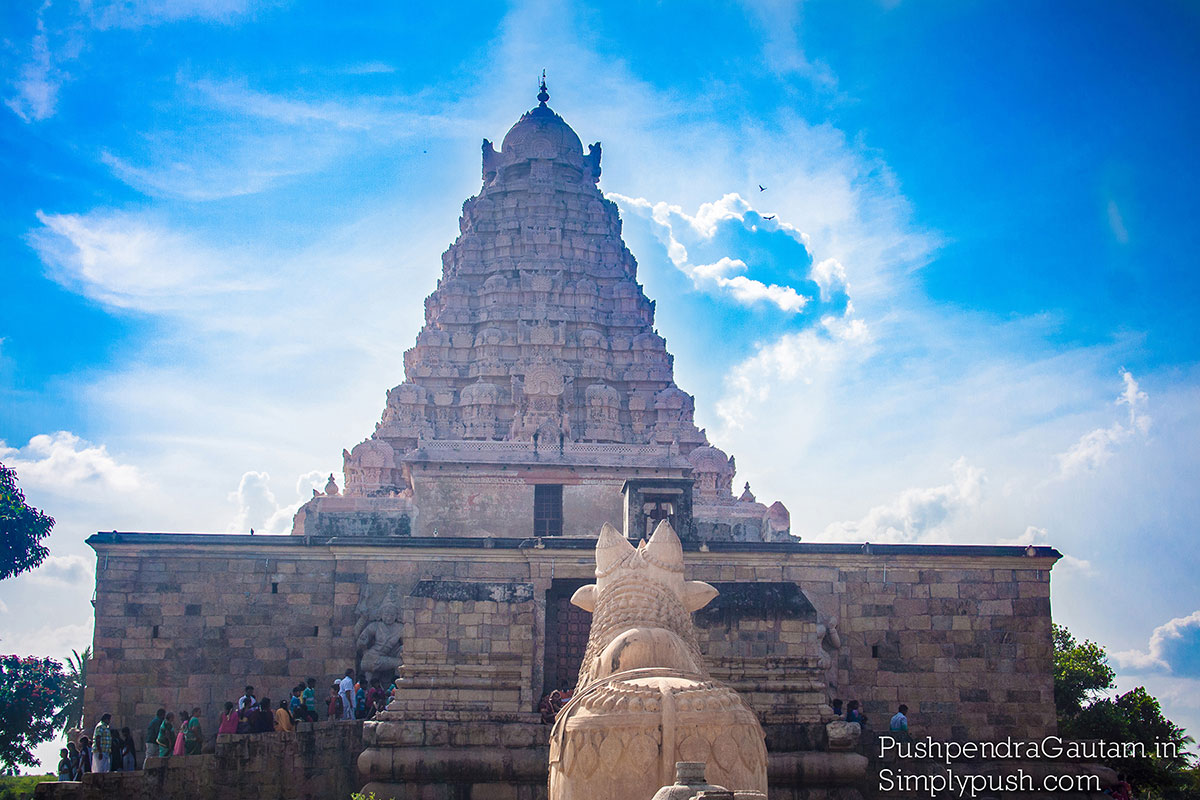
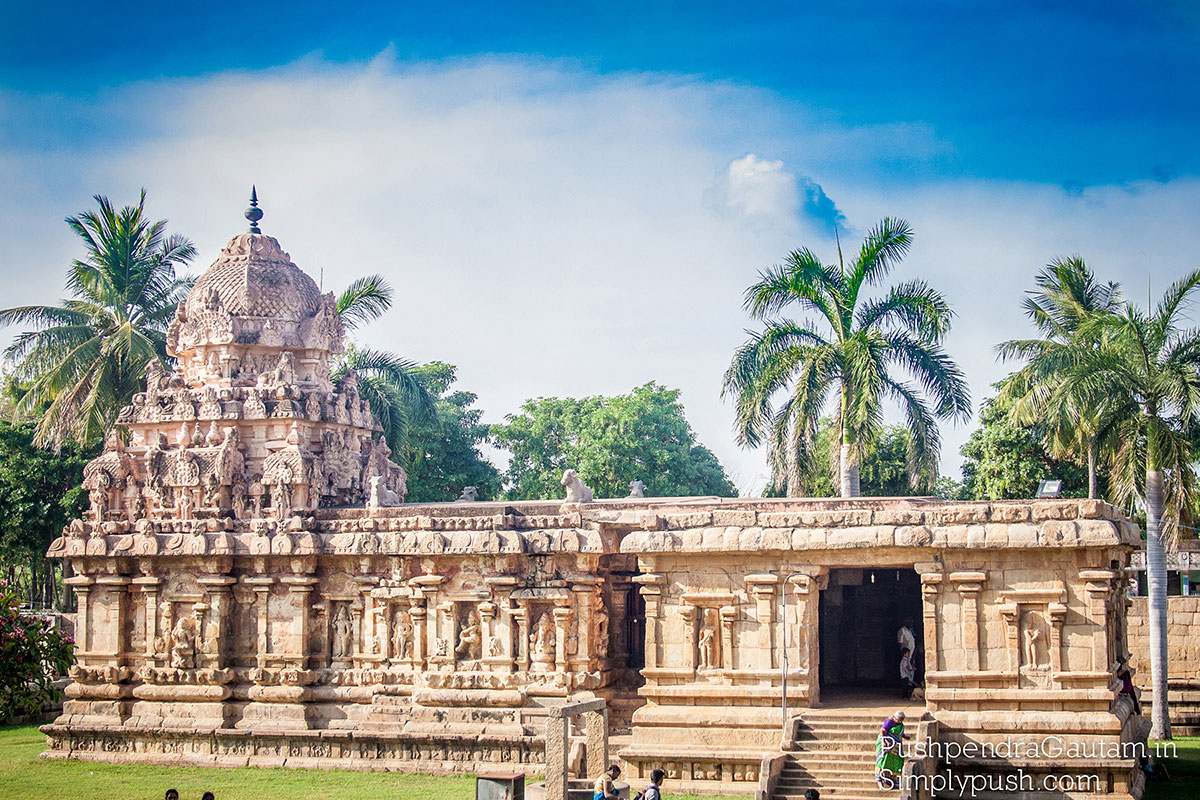
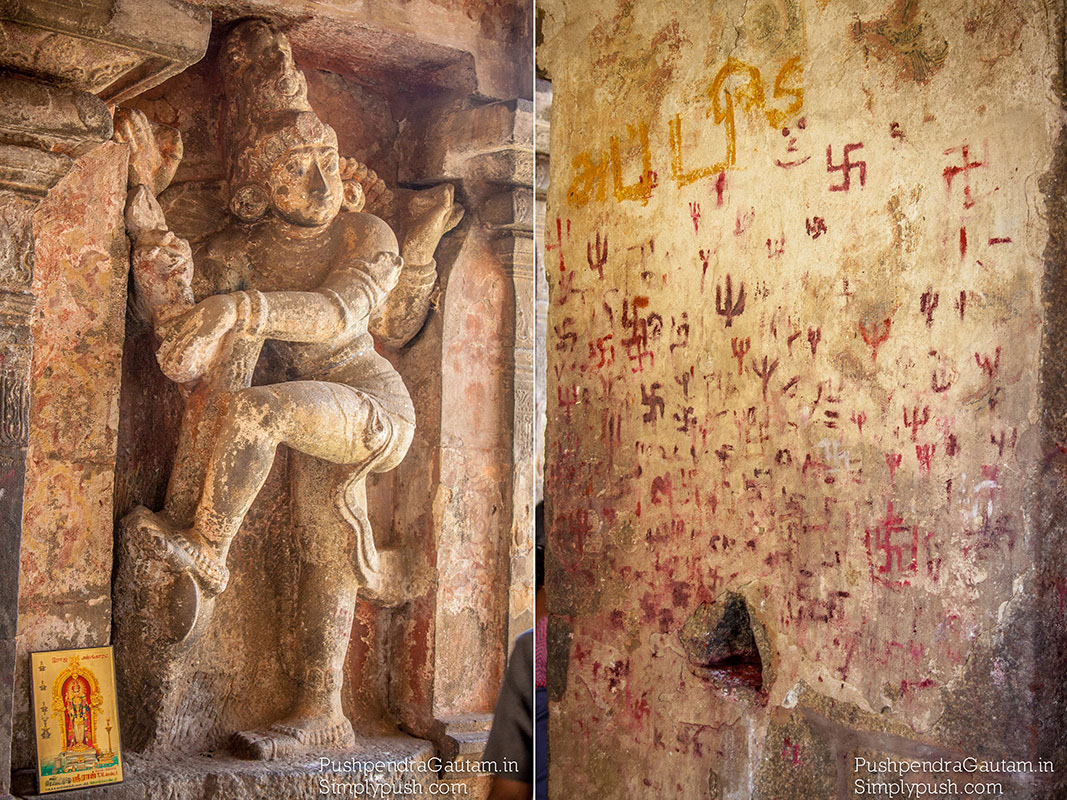 Rajendra Chola-I (1012-1044 A.D) son of the Great Rajaraja-I, established this temple after his great victorious march to river Ganges on Northern India. He assumed the title of Rajendra during his coronation and continued to rule along with his father Rajaraja-I for a while. He was awarded the supreme title of the Cholas known as Parakesari. Built in 11th century, It's dedicated to Lord Shiva.
Rajendra Chola-I (1012-1044 A.D) son of the Great Rajaraja-I, established this temple after his great victorious march to river Ganges on Northern India. He assumed the title of Rajendra during his coronation and continued to rule along with his father Rajaraja-I for a while. He was awarded the supreme title of the Cholas known as Parakesari. Built in 11th century, It's dedicated to Lord Shiva.
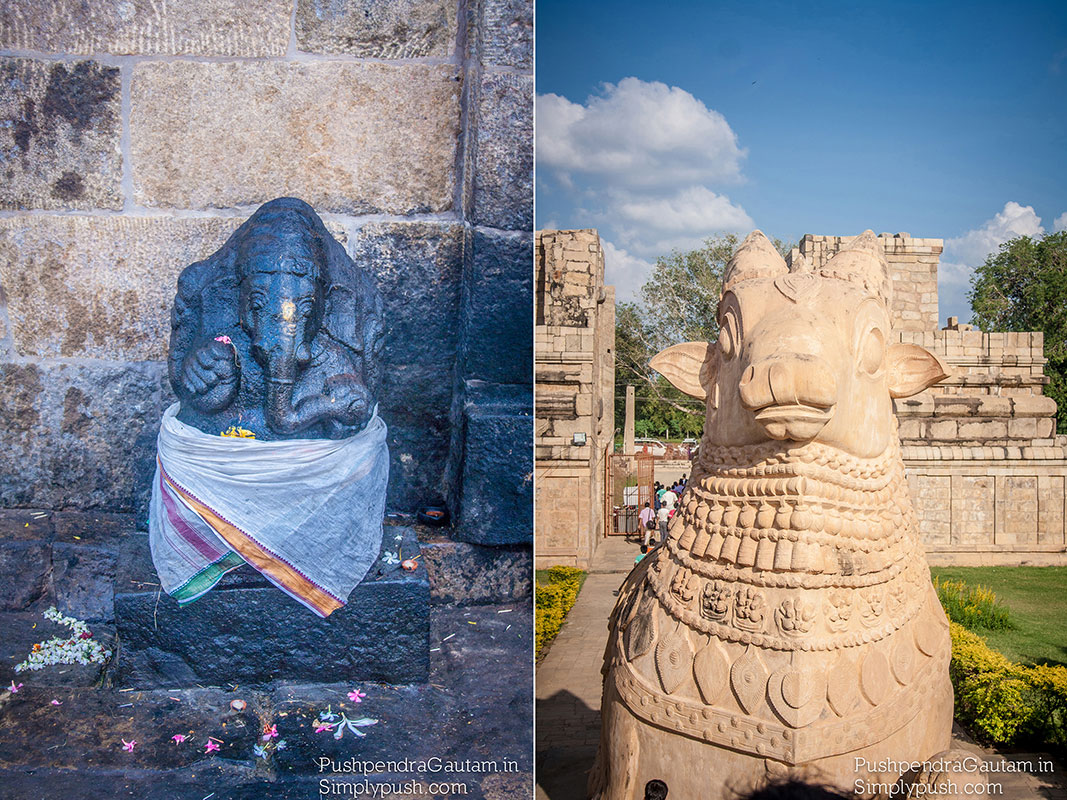
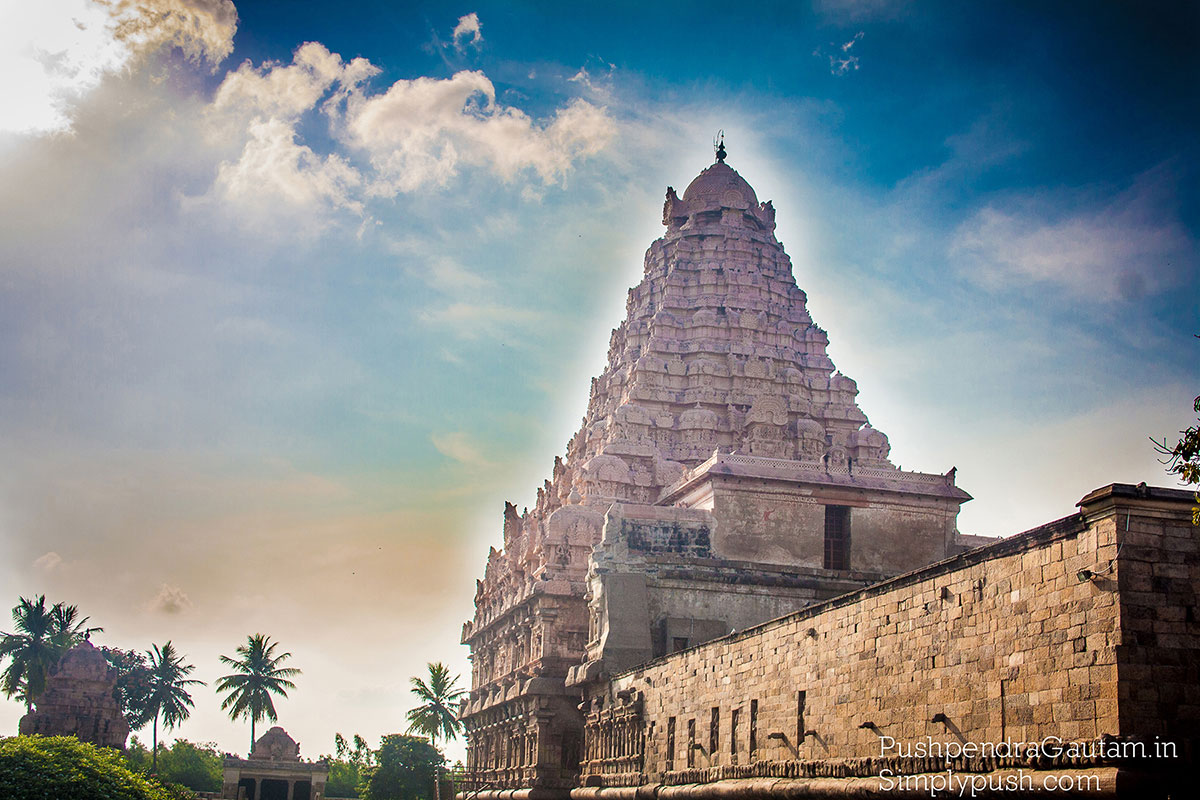 Raja Raja Chola’s Big Temple or the Brihadeshwara temple in Thanjavur towers over all shrines in South India and is a masterpiece in its own right. However his son, Rajendra Chola tries to replicate his father’s magnum opus in his new capital, Gangaikondacholapuram, but stops his work midway. Perhaps, this panel depicting Shiva blessing the prince and showcasing the story of Chandela has something to do with it.
Raja Raja Chola’s Big Temple or the Brihadeshwara temple in Thanjavur towers over all shrines in South India and is a masterpiece in its own right. However his son, Rajendra Chola tries to replicate his father’s magnum opus in his new capital, Gangaikondacholapuram, but stops his work midway. Perhaps, this panel depicting Shiva blessing the prince and showcasing the story of Chandela has something to do with it.
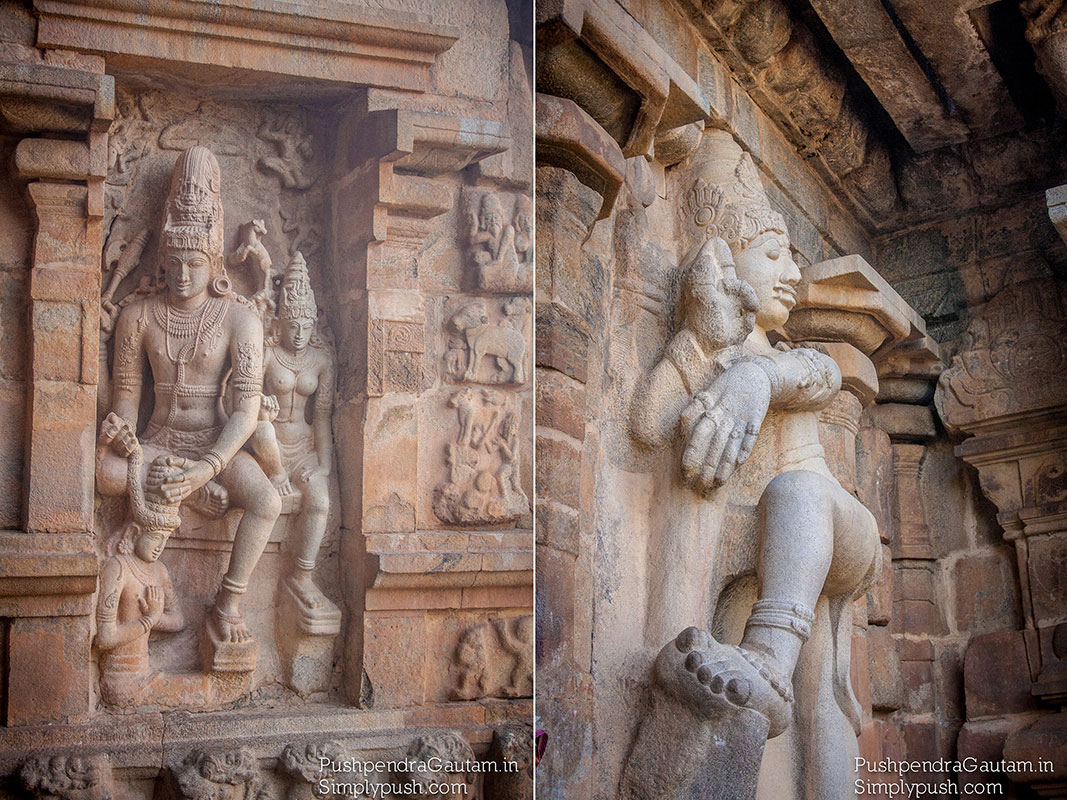
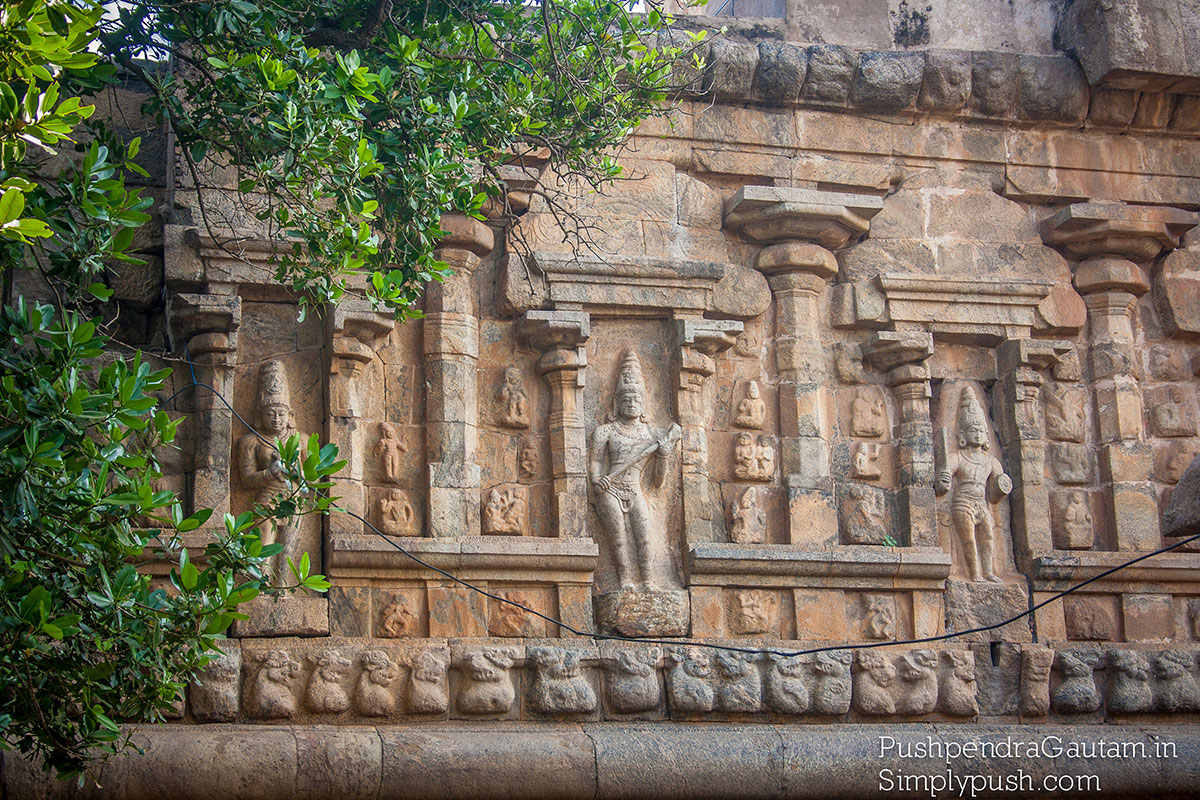 "All three temples are living -- they follow ancient Vedic rituals and the deities are worshipped every day."
"All three temples are living -- they follow ancient Vedic rituals and the deities are worshipped every day."
Gangaikonda Cholapuram temple is around 100 kms from Trichy. It was erected as the capital of the Cholas by Rajendra Chola I, the son and successor of Raja Raja Chola, the great Chola who conquered a large area in South India, Sri Lanka, Bangladesh, Sumatra, Kadaram (Kedah in Malyasia) at the beginning of the 11th century A.D
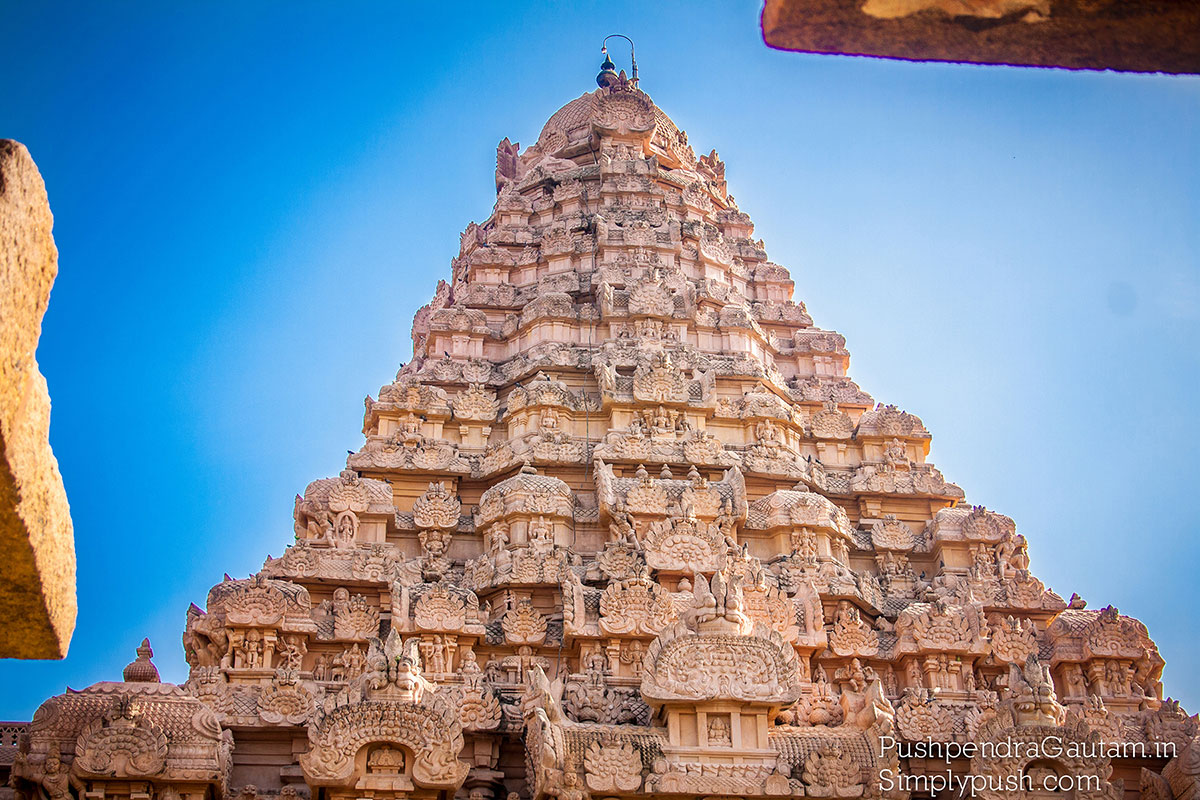
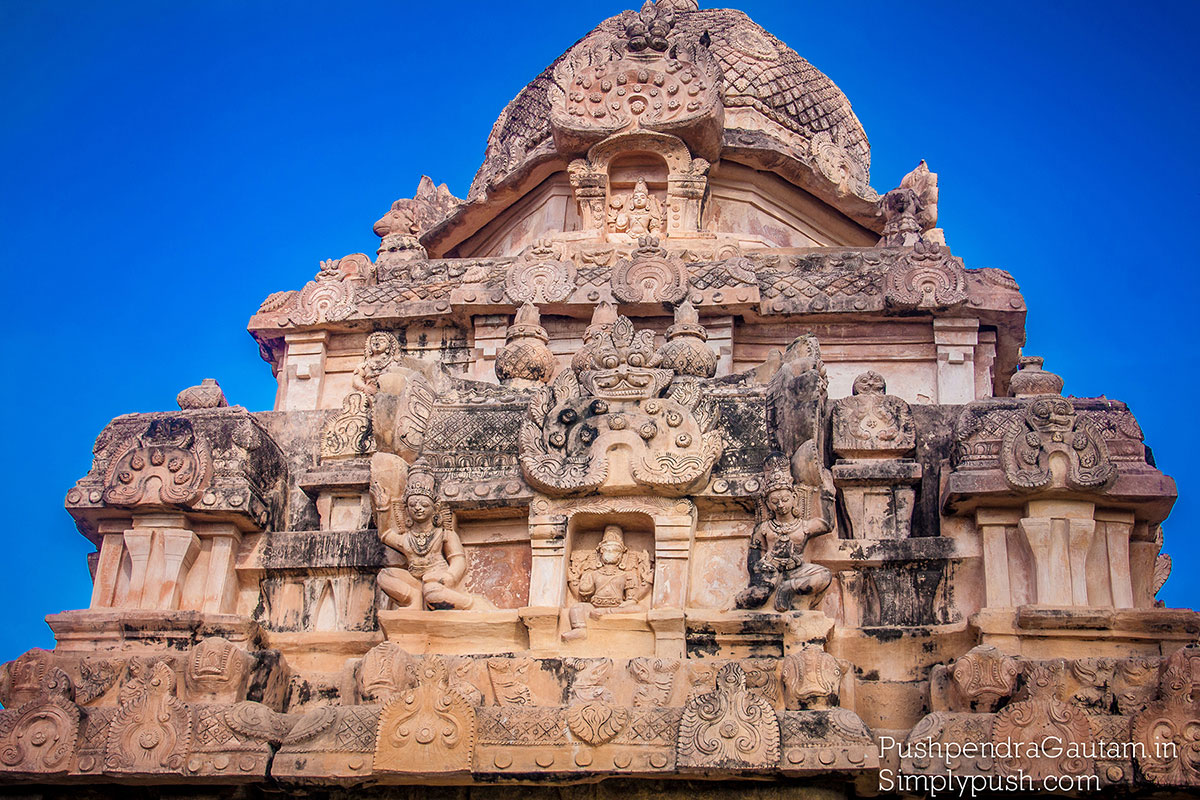
As the capital of the Cholas from about 1025 A.D. for about 250 years, the city controlled the affairs of entire southern India, from the Tungabhadra in the north to Ceylon(Sri Lanka) in the south and other south east Asian countries.
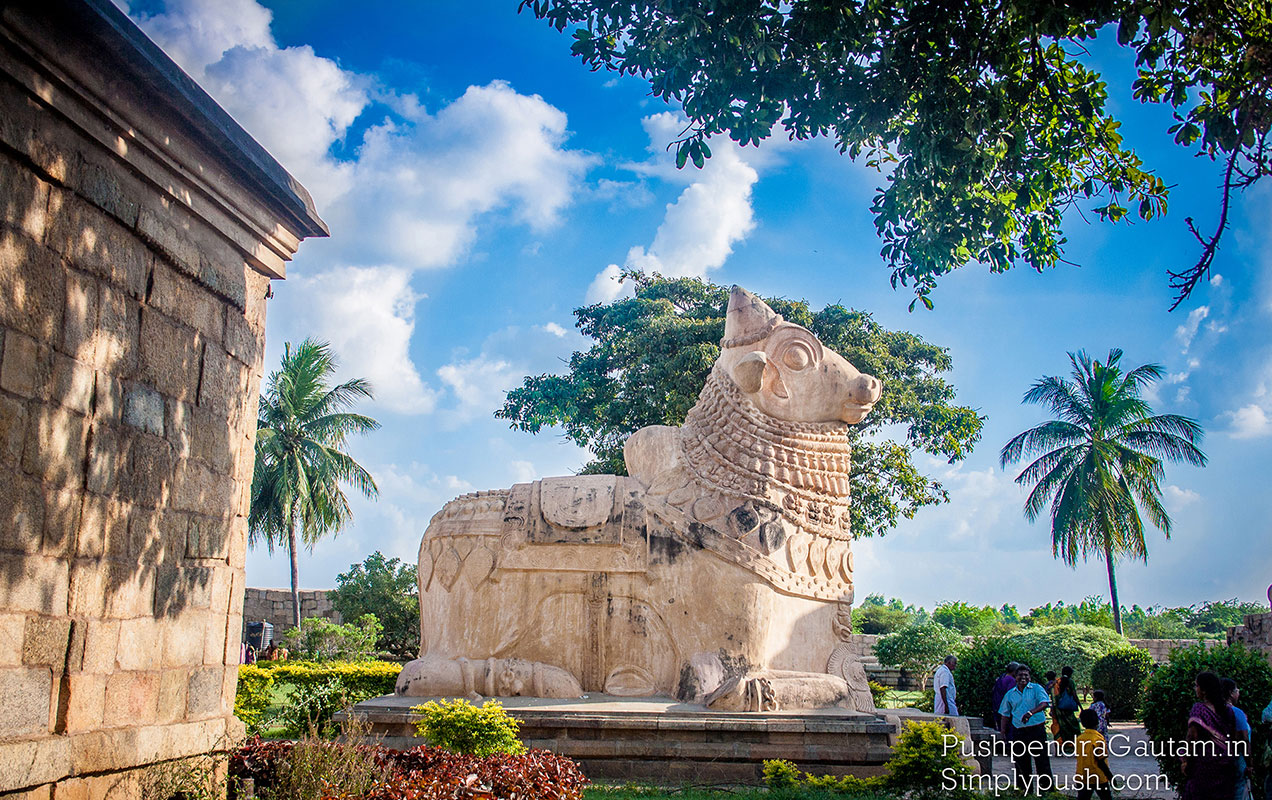 The temple is an architectural and engineering marvel also because the shadow of the main tower never falls on the ground throughout the year.
The temple is an architectural and engineering marvel also because the shadow of the main tower never falls on the ground throughout the year.
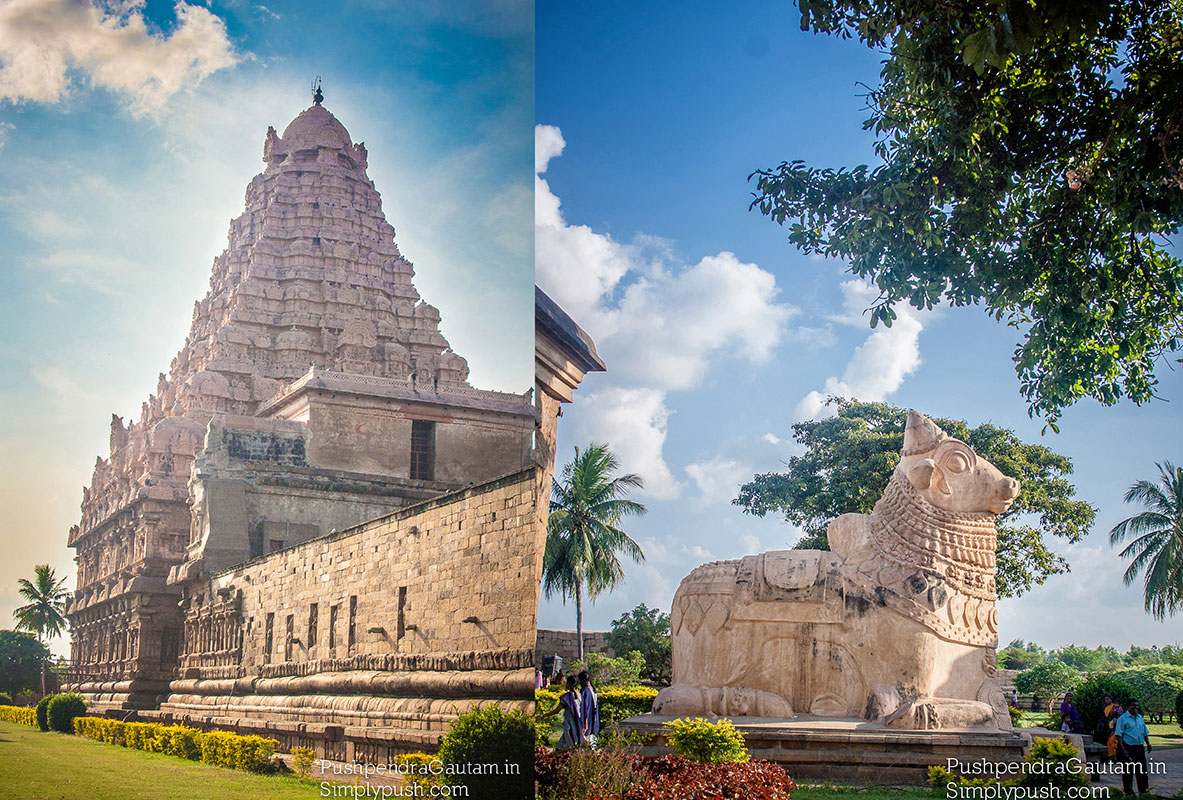
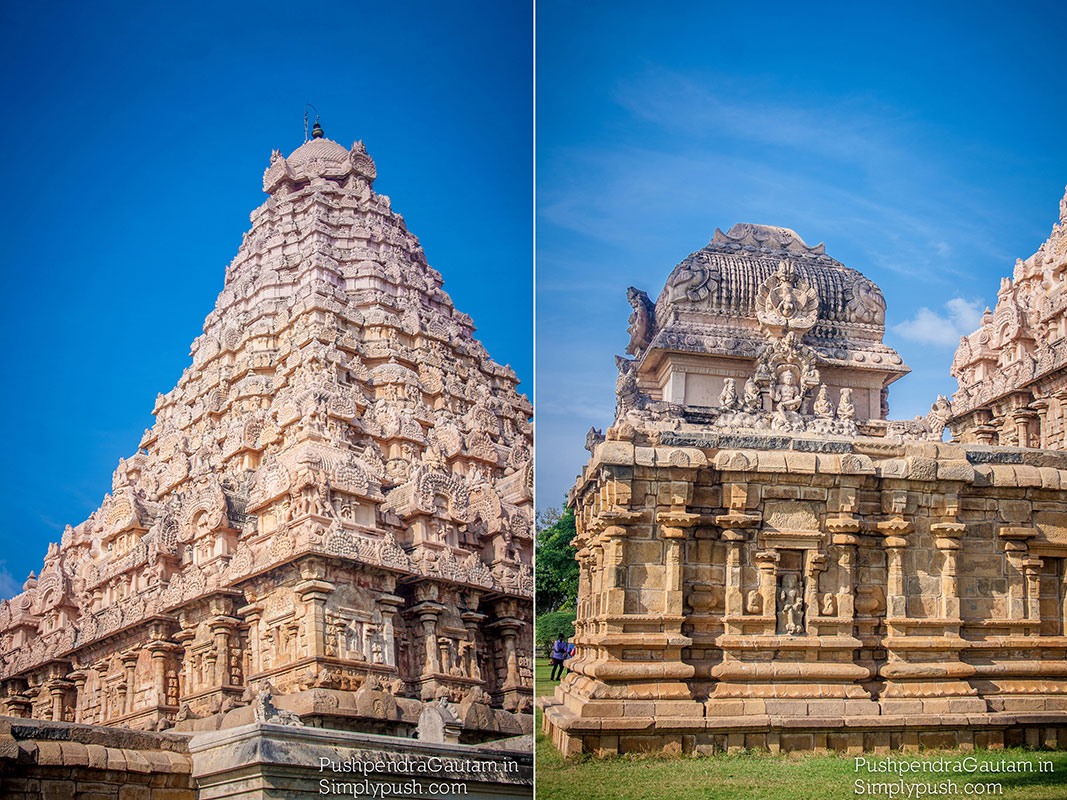 His empire included the whole of southern India to the river Thungabathra in the north. For administrative and strategic purposes he built another capital and named it Gangaikondacholapuram. The Gangaikondacholapuram temple he constructed consists of 3 stories and was surrounded by a huge fort-like wall, the outer wall largely destroyed during the English rule (1896) to reuse the building material (granite rocks) for constructing the Lower Anicut the dam built across river Kollidam. He built around 10 temples at various places.
His empire included the whole of southern India to the river Thungabathra in the north. For administrative and strategic purposes he built another capital and named it Gangaikondacholapuram. The Gangaikondacholapuram temple he constructed consists of 3 stories and was surrounded by a huge fort-like wall, the outer wall largely destroyed during the English rule (1896) to reuse the building material (granite rocks) for constructing the Lower Anicut the dam built across river Kollidam. He built around 10 temples at various places.
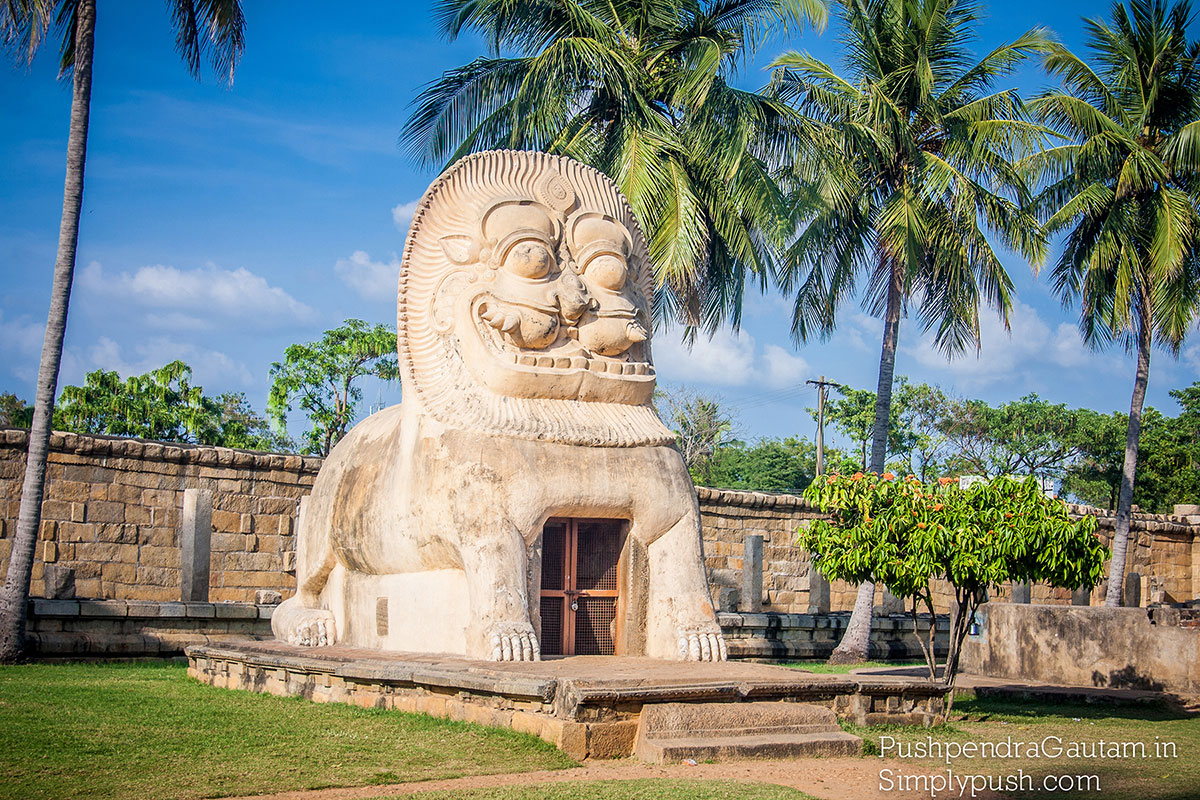 The King takes the title of Gangaikonda Cholan and named his new capital as Gangaikondacholapuram and he also constructed a huge Lake known as Chola Gangam that spreads 22 km mainly used for drinking and irrigation. A statue of Rajendra-I is found in Kolaram temple at Kolar of Karnataka state in India.
The King takes the title of Gangaikonda Cholan and named his new capital as Gangaikondacholapuram and he also constructed a huge Lake known as Chola Gangam that spreads 22 km mainly used for drinking and irrigation. A statue of Rajendra-I is found in Kolaram temple at Kolar of Karnataka state in India.
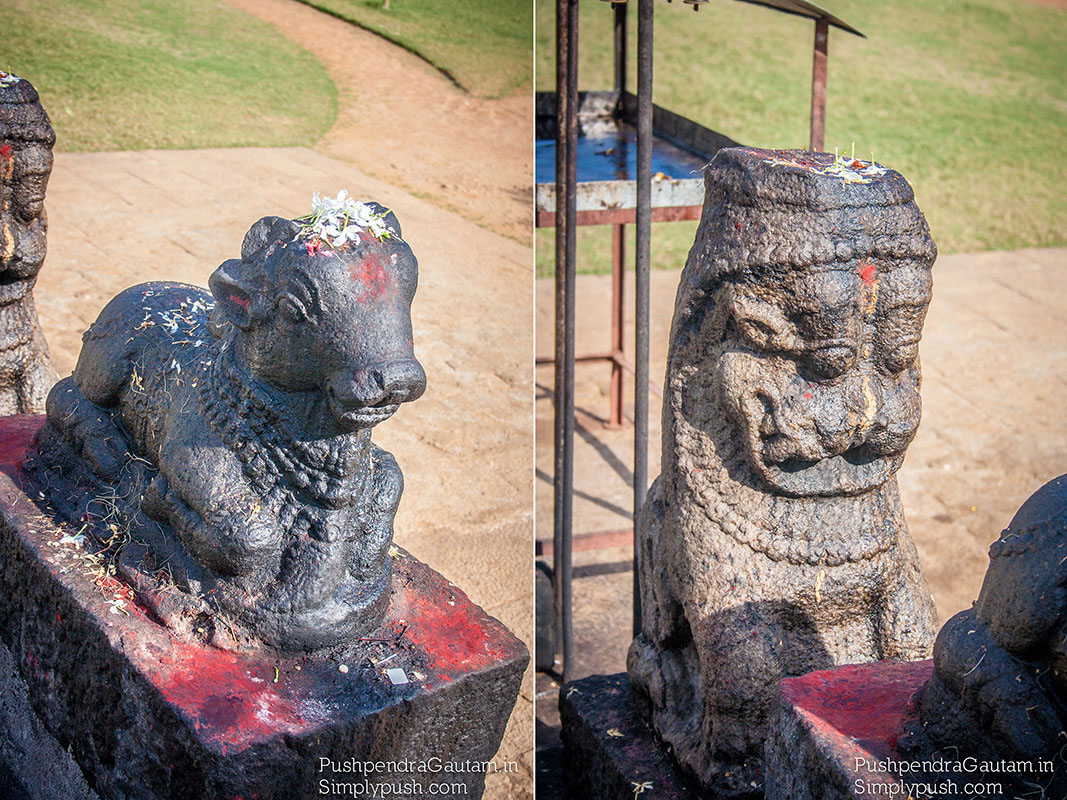
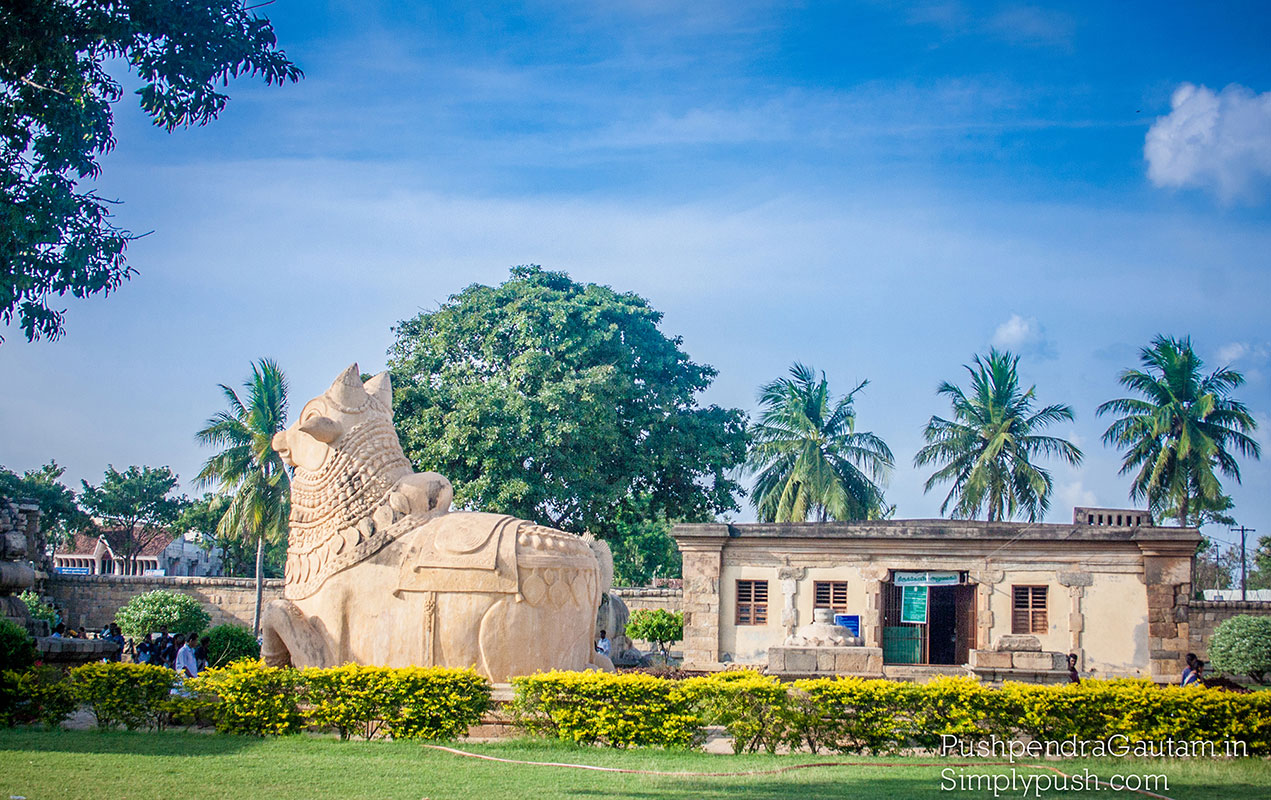
Below is the itinerary for "Great Chola Temples" from our trip (From Bangalore).
Day 1 : Bangalore – Chennai (overnight bus)
Day 2 : Chennai – Tanjore (in Chennai you can also visit Mahabalipuram which is 50 kms away)
Day 3 : Tanjore – GangaikondaCholapuram
Day 4 : GangaikondaCholapuram – Darasuram
Day 5 : Darasuram – Bangalore
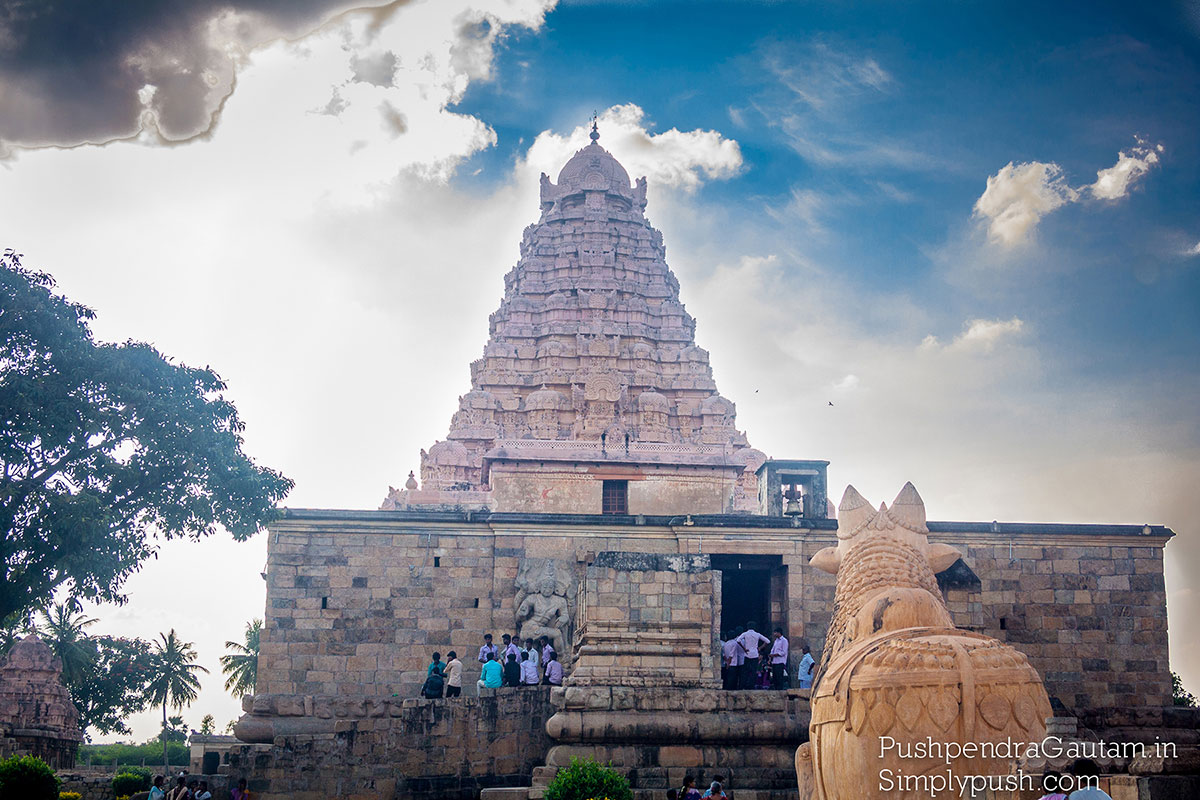 Deities are often portrayed with multiple arms, especially when they are battling cosmic forces. The multiplicity of arms emphasizes the deity's immense power and ability to perform several acts at the same time. The portrayal of a deity in human form but with multiple arms is the artist's attempt to express the deity's superhuman power. Demons are frequently depicted with multiple heads to convey their superhuman power as well.
Deities are often portrayed with multiple arms, especially when they are battling cosmic forces. The multiplicity of arms emphasizes the deity's immense power and ability to perform several acts at the same time. The portrayal of a deity in human form but with multiple arms is the artist's attempt to express the deity's superhuman power. Demons are frequently depicted with multiple heads to convey their superhuman power as well.
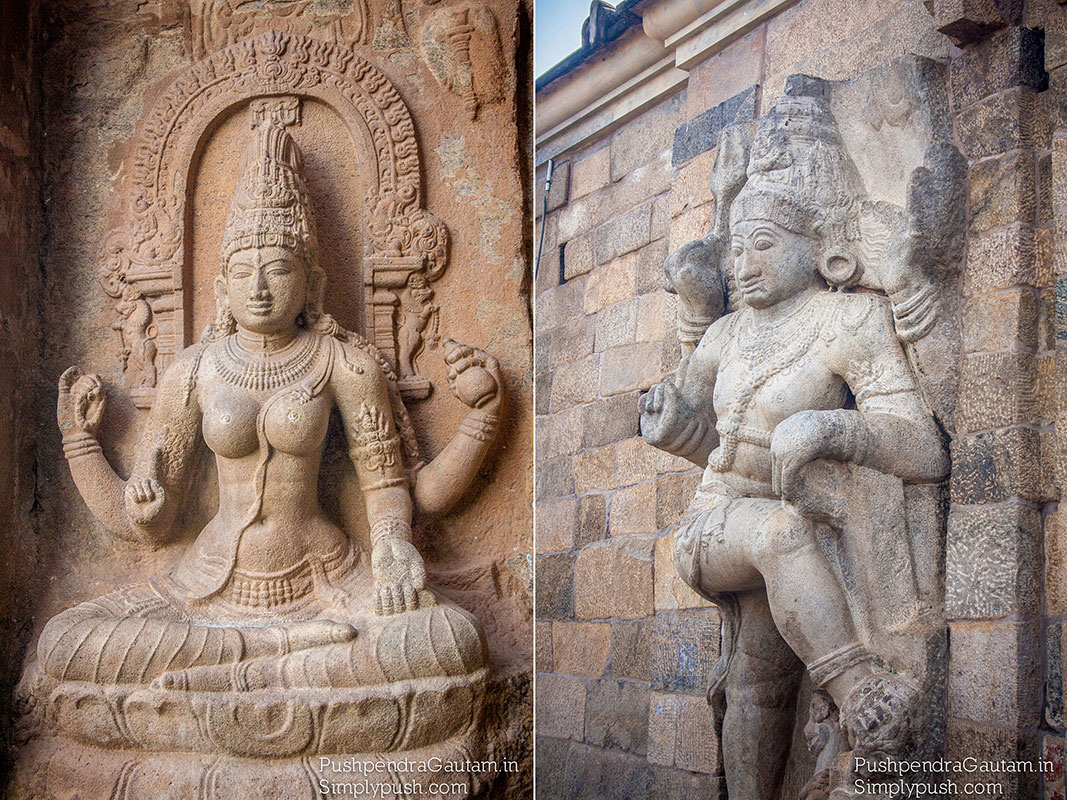 Below is the Map from the trip.
Below is the Map from the trip.
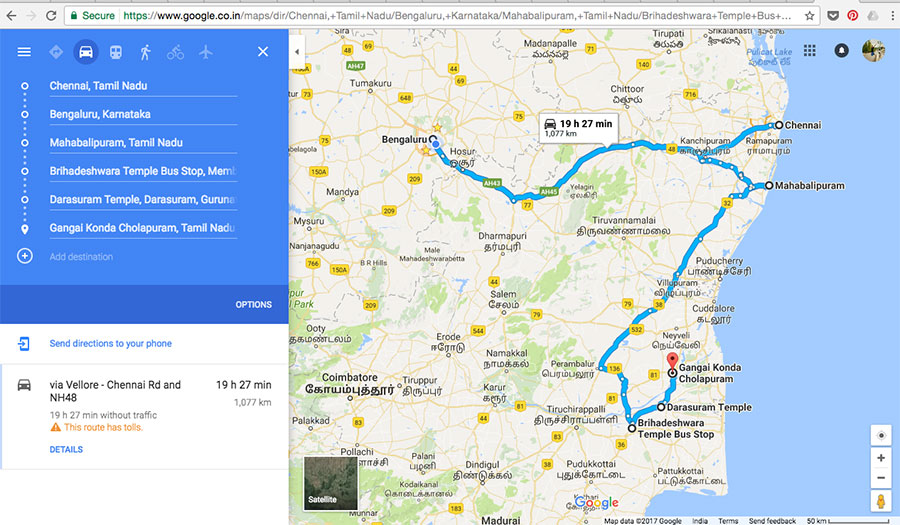
Join My journey on on Facebook,Instagram and Twitter for more musings on life as a digital nomad around the world.
Subscribe to my monthly newsletter to receive travel inspiration in your inbox!

